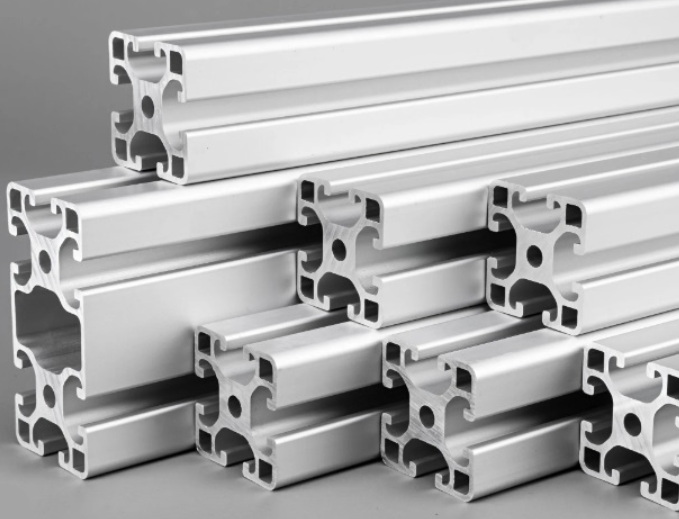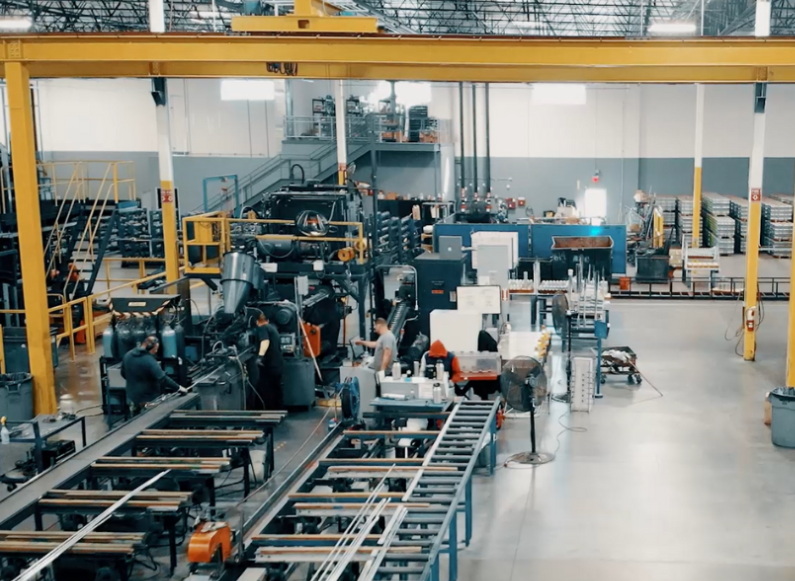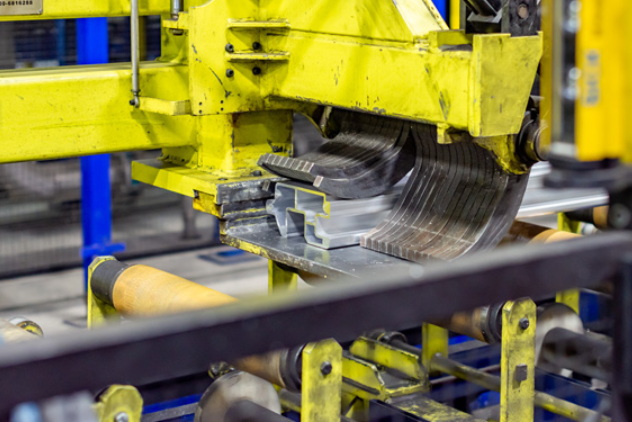Content Menu
● Introduction to Aluminum Extrusion
>> Aluminum Extrusion Process
● Factors Affecting Lead Times
● Short Run Aluminum Extruders
>> Mould Development and Production
>> Deep Processing Capabilities
>> Packaging and Delivery
● Case Study: Custom Aluminum Extrusions for Automotive Industry
>> Example: Aluminum B-Pillars
● Industry Trends and Challenges
>> Impact of Raw Material Availability
>> Technological Advancements
● Customization and Innovation
>> Design Collaboration
>> Tooling Advantages
● Conclusion
● Frequently Asked Questions
>> 1. What is the typical lead time for tooling in short run aluminum extrusions?
>> 2. How do fabrication processes affect the lead time of aluminum extrusions?
>> 3. What are the common applications of short run aluminum extrusions?
>> 4. How do short run aluminum extruders handle deep processing tasks?
>> 5. What factors influence the choice of alloy in aluminum extrusions?
● Citations:
Aluminum extrusion is a versatile manufacturing process used to create a wide range of products, from simple rods to complex profiles. Short run aluminum extrusions are particularly useful for projects requiring small quantities or custom designs. Understanding the lead times for these extrusions is crucial for planning and managing projects efficiently. In this article, we will delve into the factors affecting lead times, the typical process involved in short run aluminum extrusions, and how short run aluminum extruders operate.

Introduction to Aluminum Extrusion
Aluminum extrusion involves heating aluminum billets and pushing them through a die to create the desired shape. This process is widely used in industries such as automotive, aerospace, and construction due to aluminum's lightweight and corrosion-resistant properties.
Aluminum Extrusion Process
The aluminum extrusion process can be broken down into several key steps:
1. Preheating the Billet: The aluminum billet is heated to a temperature between 400°C and 500°C to make it malleable.
2. Loading into the Press: The heated billet is then loaded into the extrusion press.
3. Extrusion: The billet is pushed through the die using hydraulic pressure, forming the desired shape.
4. Quenching: The extruded profile is cooled rapidly to achieve uniform mechanical properties.
5. Stretching and Aging: The extrusion is stretched to remove internal stresses and then artificially aged to enhance its strength.
6. Cutting and Packaging: The final step involves cutting the extrusions to the required length and packaging them for delivery.
Factors Affecting Lead Times
Lead times for short run aluminum extrusions are influenced by several factors:
- Tooling Lead Time: This is the time required to manufacture the extrusion die. For simple shapes, it can be as short as 2-3 weeks, while more complex designs may take longer. The complexity of the die, such as those for tubes, can increase the lead time to 3-4 weeks[1][6].
- Extrusion Lead Time: This includes the time the order waits in the production queue and the actual extrusion process. Most of this time is spent waiting in the queue. The actual extrusion process itself is relatively quick, often taking only a few hours[1].
- Fabrication Lead Time: Additional processes like cutting, drilling, or anodizing can add 1-2 weeks to the lead time for each process required[1].

Short Run Aluminum Extruders
Short run aluminum extruders specialize in producing small quantities of custom aluminum profiles. These extruders often have flexible production schedules, allowing them to accommodate urgent orders or unique designs.
Mould Development and Production
For short run aluminum extruders, mould development and sample confirmation typically take 12-18 days. Once the mould is ready, production usually takes an additional 25-30 days after receiving the deposit from the buyer.
Deep Processing Capabilities
These extruders often offer deep processing services such as cutting, drilling, machining, and bending to meet specific customer requirements.
Packaging and Delivery
Products are carefully packaged with protective films and shipped in boxes or custom containers to ensure safe delivery.
Case Study: Custom Aluminum Extrusions for Automotive Industry
In the automotive sector, short run aluminum extruders play a crucial role in providing custom parts for prototypes or low-volume production vehicles. These extrusions can be tailored to meet specific design and performance requirements, such as varying wall thicknesses to optimize strength and weight.
Example: Aluminum B-Pillars
Aluminum extrusions are increasingly used in vehicle structures, including B-pillars, due to their strength-to-weight ratio and corrosion resistance. Short run aluminum extruders can produce these components with precise specifications, contributing to the development of lighter and safer vehicles.
Industry Trends and Challenges
The demand for aluminum extrusions is high across various industries, including automotive and aerospace, where aluminum is used for its lightweight and corrosion-resistant properties[1]. However, this high demand can lead to longer lead times, especially during peak production seasons.
Impact of Raw Material Availability
The availability of raw materials, such as specific aluminum alloys, can significantly impact lead times. Disruptions in supply chains or shortages of certain alloys can cause delays in production[4].
Technological Advancements
Modern aluminum extrusion plants equipped with advanced technology can offer faster lead times compared to facilities with older equipment. Efficient processes and automation help reduce production time and improve product quality[4].
Customization and Innovation
One of the key advantages of working with short run aluminum extruders is the ability to customize extrusions to meet specific project needs. This includes not only the shape and size of the extrusion but also additional processes like surface treatments or machining.
Design Collaboration
Collaboration between designers, engineers, and extruders is crucial for achieving optimal product performance. By working together, they can develop innovative die designs that meet tight dimensional tolerances with minimal die deflection[3].
Tooling Advantages
Aluminum extrusion tooling offers several advantages, including faster lead times compared to other manufacturing processes like die casting or injection molding. The cost of tooling for aluminum extrusions is generally lower, ranging from $1,000 to $4,500, with lead times of 10-14 days[3].
Conclusion
Understanding the lead times for short run aluminum extrusions is essential for managing projects effectively. By recognizing the factors that influence these lead times and the capabilities of short run aluminum extruders, businesses can better plan their production schedules and meet their specific needs.

Frequently Asked Questions
1. What is the typical lead time for tooling in short run aluminum extrusions?
The typical lead time for tooling in short run aluminum extrusions can range from 2-4 weeks, depending on the complexity of the die[1][6].
2. How do fabrication processes affect the lead time of aluminum extrusions?
Fabrication processes such as cutting, drilling, or anodizing can add 1-2 weeks to the lead time for each process required[1].
3. What are the common applications of short run aluminum extrusions?
Short run aluminum extrusions are commonly used in industries like automotive, aerospace, and construction for custom or prototype parts.
4. How do short run aluminum extruders handle deep processing tasks?
Short run aluminum extruders often provide deep processing services such as cutting, drilling, and machining to meet specific customer needs.
5. What factors influence the choice of alloy in aluminum extrusions?
The choice of alloy in aluminum extrusions depends on factors like strength requirements, corrosion resistance, and cost. For example, the 6000 series is common in automotive applications, while the 7000 series is often used in aerospace due to its higher strength.
Citations:
[1] https://profileprecisionextrusions.com/everything-you-need-to-know-about-aluminum-extrusion-lead-times/
[2] https://hitopindustrial.com/aluminum-extrusion-process/
[3] https://www.alexandriaindustries.com/white-papers/aluminum-extrusion-tooling-advantages/
[4] https://www.fortune-alu.com/info-detail/average-lead-time-for-manufacturing-aluminium-profiles
[5] https://waykenrm.com/blogs/aluminum-extrusion/
[6] https://eagle-aluminum.com/aluminum-extrusion-lead-times/
[7] https://www.longshengmfg.com/aluminum-extrusion-process/
[8] https://www.goldapple-alu.com/case-studies-success-stories-from-top-aluminum-extrusion-suppliers.html
[9] https://www.alu4all.com/how-long-does-it-take-to-get-custom-aluminum-extrusions-made/
[10] https://www.3erp.com/services/aluminum-extrusion/






















